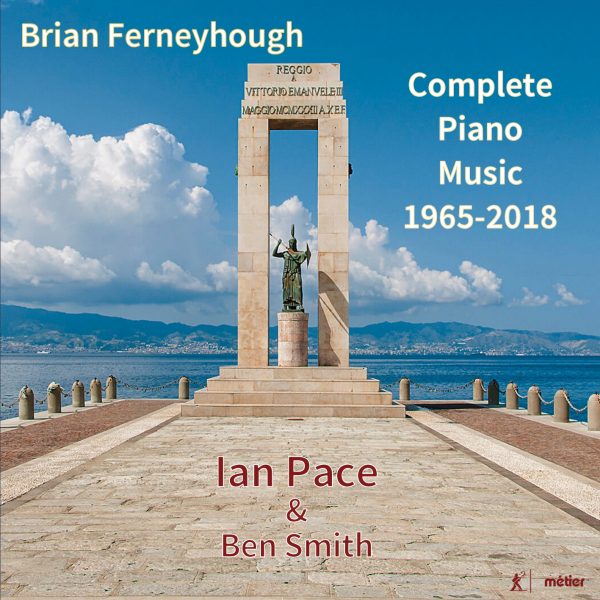Fanfare
Not for the faint-hearted (either listener or performer), the music of Brian Femeyhough has been a sort of standard bearer for the New Complexity School of composition for some time. And one of his fiercest proponents has been the formidable English pianist Ian Pace, who here presents Femeyhough’s complete piano music 1965-2018.
The journey begins with the 1965 piece Invention, which pretty much sets out the wares for the twofer. It’s active, disjunctive, arhythmic, bracing, fascinating—and much more besides. Pace captures the quixotic nature of the music perfectly: ephemeral and fleeting, yet one is changed by contact with it. Pace finds play and gesture in this thicket of notes, as he does in Epigrams, penned in the very next year. Focusing on specific aspects of compositional technique, these allow perhaps for more character to come through. Despite their premise, I find the overall impression less rigorous, something perhaps underlined by the sheer beauty of the final movement, its lines expanding over the length and breadth of the keyboard. Pace’s beauty of sound, as well as expression, make this a performance to remember.
Contemporary with Epigrams is the remarkable Sonata for Two Pianos, in which Pace is joined by Ben Smith. This sonata sits on the same exalted plane as Pierre Boulez’s Structures for two pianos (Structures I 1952, Structures II, 1961). Femeyhough seems to work in contrasting plateaus; in the slower (less active) sections he maintains an underlying current of energy, often through oscillating or trilling components.
Returning to solo piano, the 3 Pieces of 1966-67 begins with a piece that inhabits what the composer himself calls a “mercurial field”; there is a feeling of winding down as the pieces progress. Pace sees both the macrocosm and the microcosm in Femeyhough’s music, something only someone steeped in this vernacular could achieve.
Taking its title from poetic form, Lemma-Icon-Epigram (1981) if anything ups the ante, introducing a new level of manic activity in the opening “Lemma” before sparks and traceries take over for the quicksilver Femeyhough-Mendelssohn (!) “Icon”: A Midsummer Night’s Trip, perhaps.
The second disc takes us into the new century for Opus Contra Naturam (2000), a piece intimately bound up with Femeyhough’s opera Shadowtime, specifically the descent of the avatar of philosopher Walter Benjamin into the Underworld. The piece is instructed to be played by a Liberace-like figure and is itself accompanied by silent film of images from Berlin cabaret to present-day Las Vegas. There is deliberate fracturing of the musical discourse.
Composed at the request of the astonishing contemporary pianist Nicolas Hodges, Quirl plays with fractal rhythms (and their inherent similarities). Spiky and dense, it sits in contrast to El Rey de Calabria, a piece that identifiably veers more towards the Second Viennese School in ethos (it is written “for Trifolio, 1988-2005,” the Femeyhoughs’ three-legged cat). Received wisdom tends to be that this is all very good but “not for consumption in one go,” or some such phrase. A reviewer’s lot is frequently to do just that, however, to listen straight through, and this particular reviewer emerged all the more energized by the experience—not easy music, for sure, but eminently worthwhile. This is a superb release of immense musical value, and a reminder of the stature of Femeyhough.
@divineartrecordingsgroup
A First Inversion Company
Registered Office:
176-178 Pontefract Road, Cudworth, Barnsley S72 8BE
+44 1226 596703
Fort Worth, TX 76110
+1.682.233.4978












